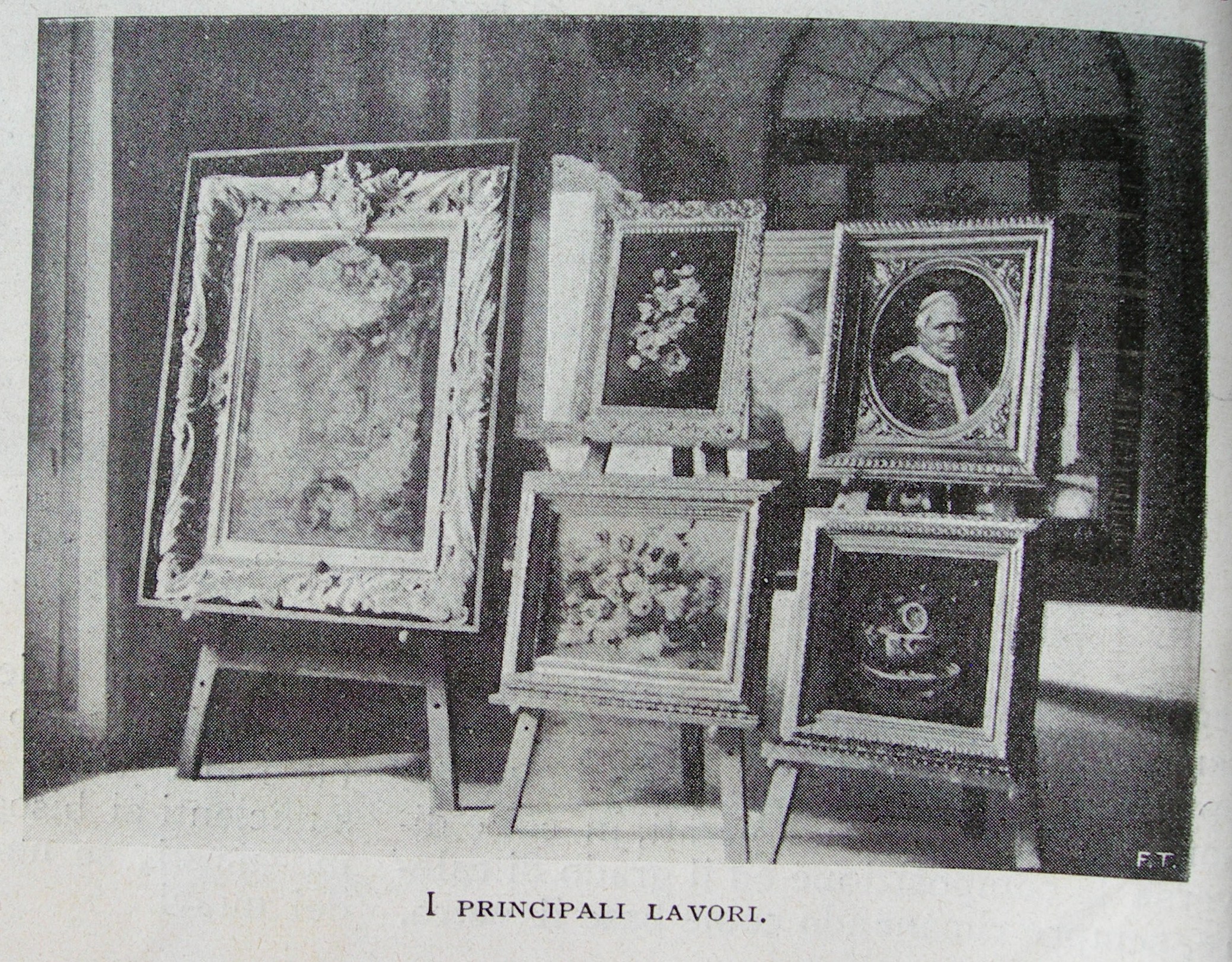after a painting by Andrea Cherubini (c.1833-1900), Rome, 1900
The reverse with remnants of the paper label from Studio Vaticano del Mosaico
30 ½ in x 37 ¼ in (77.5 x 94.5 cm)
Provenance
The collection of a noble family, Spain
Exhibited
The Louisiana Purchase Exposition, St Louis, Missouri, 1904
The wooden frame bears a label from the Vatican Mosaic Studio, the famous Roman workshop under the administration of the Reverenda Fabbrica di S.Pietro, and it has a hand written annotation: ‘fiori.... 5.625.’, on verso.
The documentation of the Archivio Storico della Fabbrica di S.Pietro (ASFSP) refers to three mosaics of Flowers with a Cardinal Woodpecker. The first two were done respectively in 1864 and 1875 by Federico Campanili and the third in 1900 by his son, Licinio Campanili. The models reproduced by both artists were copied from a painting by Andrea Cherubini (1833-c.1900), a Roman artist who specialised in landscape painting. The whereabouts of Cherubini’s painting is unknown and this mosaic is the only known copy.
The ASFSP archives allow identification of the mosaic as the one done by Licinio, although it was not signed. They also permit the reconstruction of its history from 1900, the year it was made, until 1921, when its sale was documented for the first time. A direct connection between this mosaic and the name of the artist is found on a list dated 23 April 1904 in which all the mosaics were recorded ‘to be sent’ to the Louisiana Purchase Exposition in St Louis, Missouri. This piece appears in the inventory, Flowers and a Woodpecker by Licinio Campanili, countersigned as number 1200 with a selling price of 5625 lira. The same number may be found on the back of the frame, confirming that this is the very mosaic which was sent to the Louisiana Purchase Exposition in 1904. The fact that this mosaic was selected for exhibition in St Louis demonstrates that the Vatican Mosaic Studio regarded it as a masterpiece worthy of display to an international public. Its unusually large size, the many shades of enamel employed and the lightness with which the naturalistic flower petals are rendered all endorse this view.
The mosaic returned to Italy after the American exhibition and in 1906 the magazine Il Secolo XX included a photo showing it amongst five mosaics set on easels, captioned ‘The best works’. In the same publication there are also two pictures, one of Campanili at his desk, described as an ‘expert for the flowers’, and another of Nobili. The mosaic remained among the works on exhibition at the Vatican Workshop until it was sold on 18 February 1921 to an unknown buyer.
Licinio Campanili, like his father Federico, worked exclusively at the Vatican Mosaic Studio. In 1883, when he was 18 years old, he started to frequent the famous Workshop managed by the Reverenda Fabbrica di S. Pietro becoming formally employed from 1 January 1890, initially as mosaicist ‘soprannumero’. During his long training, he attended the drawing and painting courses at the Fine Arts Academy of St Luke, obtaining prizes and an honourable recognition. On 1 July 1894, he was upgraded to mosaicist ‘di numero’. Finally, after 32 years of service, he earned the title ‘Professor Painter Mosaicist’ in 1922 with the President of the Vatican Mosaic Studio praising his valuable exhibits at the ‘Gabinetto dei Mosaici in Vaticano’ as testament to his ‘rare skill’.


















